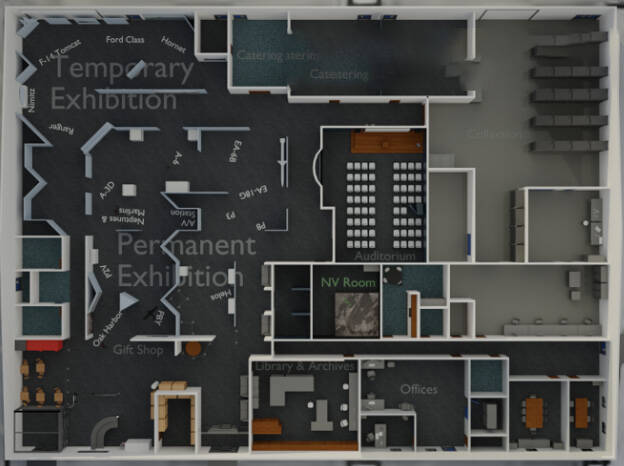Pacific Northwest Naval Air Museum has been diligently planning its leap from a 4,700 square-foot facility to a 19,500 square-foot facility, with its grand opening slated for fall.
Many upgrades are coming to fill the space, said executive director Barry Meldrum. For starters, a newly remodeled PBY Catalina will adorn the exterior, the first thing visitors see when they arrive.
Another rare item in the museum collection destined to be restored is the Hamoja Hut, possibly the last World War II housing of its kind, which was rediscovered along Highway 20 shrouded in blackberry bushes in 2018. The museum plans to return the hut to how it looked in the ‘40s.
Nearby, the flight plaza will sit, where guests can commemorate family members.
After passing the front counter, guests can choose to enter a temporary exhibit or the brand-new, expanded exhibition. The display will flow not strictly through chronological history, but stages of history based on the primary aircrafts stationed over the years. The permanent exhibition will grow to about 120 feet.
“The size and scope of the exhibition is huge,” Meldrum said.
The new museum will also hold catering rooms, offices, storage rooms, activity rooms, a conference room, collections room, auditorium, gift shop, coffee shop and more.
Of course, the flight simulator is making the jump as is an upgraded night vision room, where guests can use legitimate night vision technology to examine a model of the island used by the Navy.
Besides the physical changes, museum use will evolve as well. Meldrum envisions more of a “community hang” kind of environment, where guests can rent out space for meetings, activities and even weddings or other ceremonies.
Once the ribbon is cut, the museum will continue to expand, Meldrum said. Outside, they’d like to install panels like one would see at a national park. These will tell the story of the museum and introduce what guests will see.
Of course, they are hoping to acquire more aircrafts as well. Currently, eyes are on a P-3 Orion, as the station phases those out. But this will be an ongoing pursuit.
“I don’t think anything is relatively easy,” Meldrum said.
Pre-and-post new museum, the board has no plans of slowing down.
“Part of the mission of the museum is that we collect,” Meldrum said. “We are continuing to collect. That is our mission. We continue to collect. As soon as we stop collecting because we run out of space, we need to find space.”
Pacific Northwest Naval Air Museum runs primarily on donations. To donate, visit pnwnam.org.



